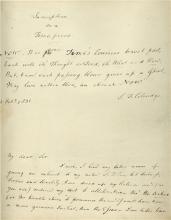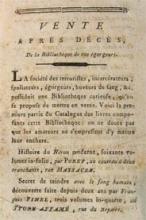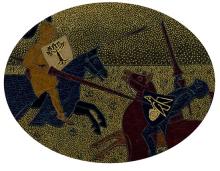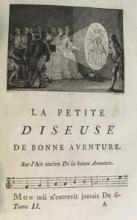The ABC's of an Unknown Duchemin
Submitted by Carolyn Vega on Thu, 09/29/2011 - 2:37pmThis little book is something of a mystery. The fifty-eight pages of the booklet are sewn in a single gathering and bound with a sheet of old vellum, which is now partially discolored from use. From this first opening (shown below), we know that it was completed by the priest Aegidius (or Gilles) Duchemin in 1740.










